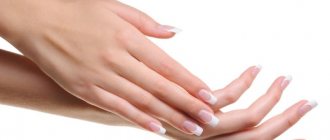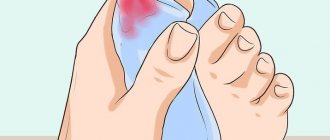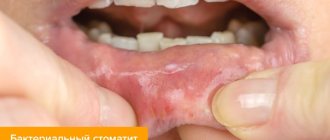General information about the disease
Arthritis of the hands often develops against the background of high functional load on the joints of the hand and their injury. The hand consists of many small bones connected into joints: the wrist, carpometacarpal and metacarpophalangeal. There are many blood vessels and nerves in the hand area, so all pathological processes are painful. ICD-10 disease code (other unspecified arthritis) is M13.
Arthritis of the hands often develops during adolescence as growth occurs and is accompanied by severe deformities. No less often they develop in the second half of life due to hormonal disorders, against the background of sports, domestic and professional injuries. The disease can equally develop in people of any gender.
Causes
It is not always possible to find out why the disease begins. Very often, the cause of arthritis of the hands is acute and chronic injuries to the hand. Acute injuries are often complicated by acute aseptic (without infection) arthritis, ending in complete recovery. But if an infection occurs, the inflammation can be purulent.
With constant minor trauma to the hand, most often professional, a chronic inflammatory process slowly develops with subsequent dysfunction of the joints.
In childhood and adolescence, juvenile chronic arthritis (JCA) can develop, the origin of which most often cannot be determined. After a few years, it leads to the development of serious deformities of the upper limbs. Deformation of the hands is a characteristic symptom of rheumatoid arthritis - an inflammatory process in the joints, the cause of which is an autoimmune process - an allergy to the patient’s own tissues. Genetic predisposition is of great importance in this disease.
Sometimes the disease develops against the background of reactive arthritis after infections of the upper respiratory tract, genitourinary organs, or intestinal infections. The exact causes of such lesions are not known, but they are also often associated with genetic factors. Infectious arthritis of the hands develops with gonorrhea, syphilis and some other infections.
Read more about infectious arthritis in this article.
Metabolic disorders can also cause inflammation of the hand joints. Thus, with disturbances in purine metabolism, gout develops, in which uric acid crystals are deposited in the articular and periarticular tissues, causing inflammation.
Great importance is attached to predisposing factors (triggers) that increase the risk of developing hand arthritis. These include previous infections, hypothermia, high physical activity on the hands, constant intense fine work with the hand, sports activities, stress, bad habits, poor nutrition, and hormonal changes. Arthritis of the hand often develops in tennis players, pianists, guitarists, hairdressers and people in any other professions whose work involves constant stress on the hands.
What research needs to be done
Because pain in the fingertips is a symptom of diseases that may pose a risk to the patient, a complete baseline examination is necessary. General and biochemical blood tests are prescribed, and an ECG is performed. Even if there is no suspicion that the pain is related to the heart, but problems with the spine cannot be ruled out, the results of the research will be needed to decide on admission to physiotherapy.
Further research depends on what diagnosis the doctor suspects after receiving the results of basic research.
Symptoms of hand arthritis
Symptoms of hand arthritis depend on the causes of the disease, its clinical form and the nature of its course. Arthritis can begin suddenly, acutely, with a disturbance in the general condition of the patient, or it can slowly and imperceptibly with gradual destruction of the joints.
First signs
Acute arthritis of the hand begins suddenly with pain, redness and swelling of the tissue. Body temperature may rise, chills, malaise, and headache may appear. This course usually forces you to immediately consult a doctor, so acute arthritis in most cases is completely cured.
The first symptoms of arthritis of the hands are pain, swelling and redness of the tissues.
In the chronic course, vague pain in the hand and wrist area first appears, then morning stiffness of the hands appears - a feeling of tight constricting gloves on the hands, which initially lasts no more than half an hour after sleep. Stiffness goes away after the start of movements. Joint pain is aching in nature; at the beginning of the disease, it appears and then disappears.
It is important to notice the first symptoms in time and immediately seek medical help!
Obvious symptoms
Gradually, the pain syndrome with arthritis of the hands increases, the aching pain becomes constant, swelling and redness appear (not always). The period of stiffness in the morning increases, the movement of the hand is impaired, first due to pain, and after a while due to dysfunction of the joint. When you squeeze the hand, a clicking sound appears, sometimes accompanied by increased pain.
Over time, the hand with arthritis of the hands becomes deformed and loses its functions. It may take on the appearance of flippers (in rheumatoid arthritis) or shorten due to the rapid ossification of growth plates in juvenile chronic arthritis. The small bones of the wrist grow together, ankylosis develops, and the hand stops bending.
Dangerous symptoms
Arthritis of the hands can become more complicated. Therefore, if the following symptoms appear, you should immediately consult a doctor:
- acute onset of the disease with high fever lasting more than 5 days;
- a sudden rise in high temperature against the background of already existing signs of arthritis, increased swelling and redness of the hand - a sign of possible purulent inflammation;
- sharp pain, deformation of the hand and increasing swelling of the tissues are a sign of dislocation or subluxation of the hand.
How to find the cause of the disease
To help the doctor make a diagnosis, it is important to correctly describe what is happening.
Pain in the fingers is almost always accompanied by other unpleasant sensations. For example, with Raynaud's phenomenon, they are accompanied by numbness, and symptoms appear after hypothermia of the hand. Polycythemia at the initial stage is accompanied by a burning sensation in the hands and their redness. Ligamenitis bothers you at rest, more often at night. If the spine is to blame, the unpleasant sensations will not be limited to the fingers; they will arise in the back or along the arm. Does your fingertip hurt when you press it? This may be associated with injury, or may occur due to the appearance of microthrombi. In such cases, sometimes black dots appear on the skin, in place of which scars form, reminiscent of rat bite marks. If this happens once, there is nothing to worry about, but if it occurs regularly, this symptom indicates the need for medical attention.
How dangerous is the disease?
The hand is the most active working organ of a person, therefore the main danger of arthritis of the hand is dysfunction, the formation of ankylosis (immobility) of the joints of the hand. Dysfunction develops gradually as the disease moves from one stage to another.
Stages
There are 4 stages of the disease, during which functional failure develops:
- Initial.
The stage of inflammation, which cannot always be seen during instrumental examination. This is the beginning of inflammation of the synovial membrane. It thickens and begins to secrete an increased volume of inflammatory exudate. Externally, this is manifested by the appearance of transient pain and slight swelling. - Explicit.
Inflammatory phenomena intensify, the amount of exudate increases, the synovial membrane grows in the form of soft granulations - pannus, occupying a significant part of the joint cavity. Pain and swelling of the tissues increase and become constant. - Formation of soft ankylosis.
The loose tissue of the pannus becomes dense and connects the surfaces of the bone joints, forming their immobility. The flexion of the hand is impaired, and the pain continues to bother me. - Formation of bone ankylosis.
Instead of connective tissue, bone tissue grows and complete immobility of the joint develops with loss of function and disability. The inflammatory process in the joints continues, so pain and swelling remain.
Any form of arthritis has serious complications, so you should not delay treatment.
See how easily the disease can be cured in 10-12 sessions.
Possible complications
At different stages, the disease can cause different complications:
- purulent inflammation involving periarticular tissues in the process; in the absence of adequate treatment, it can develop into sepsis;
- subluxations and dislocations of the affected joints – are accompanied by pain and require emergency assistance;
- shortening of the upper limb in juvenile chronic arthritis;
- complete loss of limb function, disability.
Exacerbation of the disease - what to do?
In some clinical forms, the disease occurs in waves, with exacerbations and remissions. In case of severe exacerbation with severe pain, redness and swelling of tissues, you should:
- take any pill from the group of non-steroidal anti-inflammatory drugs (NSAIDs) - Diclofenac, Meloxicam, Nise, etc.; apply an external agent (gel, ointment) with the same agents to the skin, for example, Diclofenac ointment; Menovazin, an anesthetic solution for external use, is also suitable;
- lie down in bed, give the hand an elevated position, placing a pillow under it;
- call a doctor at home.
Features of the course of arthritis of the hands in different types of disease
Arthritis of the hand can be a manifestation of various diseases, so its symptoms, course and consequences will also be different.
Post-traumatic and purulent arthritis
The addition of a purulent infection can occur with any type of disease. Most often this happens after open injuries, but sometimes the infection enters the joints through the bloodstream from distant foci of infection. If the infection does not occur, the disease is acute and ends with complete recovery.
The onset of the purulent process is acute, with fever, headache, and malaise. The hand is very painful, it swells sharply, and the skin turns red. Movements are severely limited due to pain. When such symptoms appear, the patient requires surgical assistance.
Chronic post-traumatic arthritis of the hands develops with frequent minor injuries to the hand in people involved in certain sports (tennis players), musicians (pianists), hairdressers, etc. In the absence of help and continued injury, a permanent dysfunction of the joint occurs.
Rheumatoid arthritis
Rheumatoid arthritis
Damage to the small joints of the hands develops frequently. Characterized by symmetrical joint damage and a slowly progressive course. Initially, moderate transient pain and stiffness of movement appear in the morning, lasting no more than half an hour and passing through physical activity. Arthritis of the fingers also develops.
After some time, some swelling appears over the affected area, the pain becomes constant, night pain and severe morning stiffness bother you. The swelling may increase or decrease, but the pain does not go away. Redness of the hand is rare.
If you do not consult a doctor in a timely manner, then deformation of the hands gradually appears - they take on the shape of flippers and completely or partially lose their function.
Reactive arthritis
Develops two weeks after a genitourinary or intestinal infection, sometimes after sinusitis, otitis media or tonsillitis. More often, the pathological process involves the joints of the lower extremities, but sometimes also the upper ones, for example, the wrist joint.
The disease most often occurs acutely, with pain, redness and swelling of the tissue. The prognosis is favorable: with adequate treatment, complete recovery occurs. But sometimes the course is initially chronic, in which case, with a long course, the function of the joint may be impaired.
Chondroprotectors: what are they, how to choose, how effective are they?
Joint pain at rest
Infectious arthritis
Hand damage most often occurs with gonorrheal arthritis. The inflammatory process is acute, with pain, swelling and redness of tissues, an increase in general body temperature, and malaise. Goes away after treatment for gonorrheal infection. Chronic course is rare.
Juvenile chronic arthritis (JCA)
It occurs in childhood and adolescence and can be of multifactorial origin. It often occurs chronically, but there is also a subacute course. A feature of this type of hand arthritis is frequent damage to the joints of the hand and fingers, a long course and the formation of disability over the next seven years.
Deformation of the limbs (shortening) occurs due to the premature closure of bone growth zones.
Gouty arthritis
Metabolic disease - deposition of uric acid salts in articular and periarticular tissues. Inflammation of the small joints of the hands is rarely the only symptom of the disease; usually its appearance is combined with the development of arthritis of other joints, the thumb is especially often affected. During an attack of gout, the area over the affected joint swells, turns red, and the pain is very severe. With frequent repetition of inflammation in the same joint, joint function may be impaired: the hand stops bending.
Gouty arthritis
Why do my fingers hurt?
Traumatic injuries
A bruised finger is characterized by moderate pain.
Then the intensity of the pain gradually decreases. Possible swelling, hyperemia, cyanosis, hemorrhages. The function of the finger is slightly impaired. Hematomas on the palmar surface of the fingers are manifested by moderate pain, skin detachment with the formation of a cavity filled with dark blood. With subungual hematomas, the pain is intense, jerking, pulsating, and intensifies when lowering the hand. Partial or complete detachment of the nail plate is possible. A fractured finger is accompanied by severe explosive pain at the time of injury. Subsequently, the pain decreases somewhat, but remains intense. The finger turns blue, swells, and its functions are severely impaired. Deformation, crepitus, and pathological mobility may be detected. When a finger is dislocated, there is a sharp pain. The finger is deformed, swollen, and when attempting to move the affected joint, spring resistance is detected.
With frostbite in the first hours the pain is minor and tingling. Then the pain intensifies and becomes burning. The finger swells and becomes cyanotic. With deep frostbite, there is no sensitivity in the distal parts, the fingers are cold, pale, pain is disturbing at the border between healthy and affected tissues.
Infectious lesions
Panaritium is characterized by rapidly increasing pain, swelling, hyperemia, cyanosis, and the formation of an abscess. The pain is twitching, throbbing, depriving you of sleep at night. Particularly severe painful sensations are expressed with subungual panaritium and deep forms of the disease (bone, joint, tendon). In superficial forms of panaritium (cutaneous, periungual, subcutaneous, subungual), the general condition suffers slightly; in deep cases, symptoms of intoxication and fever are observed.
Chinga develops in people involved in cutting and processing the carcasses of marine game animals; it occurs with minor injuries: abrasions, wounds, cracks. It manifests itself as dull, weak pain in the wounded area, which after 1-2 days is replaced by pain in the finger joint (usually the proximal one). The pain increases, becomes aching, throbbing, complemented by swelling, pallor, and cyanosis of the finger.
Arthritis
Pain in the joints of the fingers with rheumatoid arthritis is symmetrical. 1st degree of activity is manifested by minor arthralgia, quickly disappearing stiffness. At grade 2, pain is disturbing at rest and during movement, combined with prolonged stiffness, limitation of movement, and redness. Grade 3 is characterized by intense constant pain, persistent stiffness, swelling, and hyperemia. Movements are severely limited.
Gouty arthritis of the fingers more often develops in women. One or more joints may be affected. The pain is usually acute, sharp, combined with swelling, hyperemia, dysfunction, and increased general temperature. Less commonly observed are mild symptoms - minor pain and mild redness with a satisfactory general condition.
Psoriatic arthritis occurs suddenly or gradually. In the first case, the pain is moderate and increasing, in the second case it is sharp and intense. At the height of the disease, the typical picture includes pain that worsens at night and at rest, weakens during the day with movement, swelling of the fingers, and a purplish-bluish coloration of the skin. The distal interphalangeal joints are most often affected. Over time, multiple deformations appear.
With post-traumatic arthritis, one joint is affected. For infectious-allergic forms of the disease that develop against the background of bacterial and viral infections, multiple lesions are typical. With occupational peripheral arthritis, the most loaded joints of the fingers are involved in the process. Pain in all of the above forms of pathology intensifies at night, weakens during the day, and is supplemented by morning stiffness, local swelling, and difficulty moving. Over a long period of time, deformations are observed.
Pain in fingers
Degenerative pathologies
With arthrosis of the hands, the pain is initially vague, periodic, and short-term. Morning stiffness is noted. Subsequently, the painful sensations intensify, become prolonged, sometimes burning, are observed with any movements, limit daily activity, and perform delicate operations. Heberden and Bouchard nodes are formed. Lateral deformations are formed.
Diseases of ligaments and tendons
Patients suffering from stenosing ligamentitis experience pain along the palmar surface at the base of the affected finger. At first, the pain syndrome appears only with pressure and small movements, then persists at rest. Movements are limited and accompanied by a click. Over time, a flexion contracture develops; after a click, the pain radiates to the arm.
At the initial stage, de Quervain's disease manifests itself as pain when abducting or hyperextending the first finger. Subsequently, aching, pressing pain occurs with any physical activity; some patients are bothered even at rest. Irradiation into the distal phalanx or into the forearm from the side of the first finger is typical.
Angiotrophoneuroses
Raynaud's syndrome is caused by vasospasm, accompanied by paroxysmal numbness and coldness of the fingers. The pain occurs in the second phase of the attack, is aching in nature, combined with a burning sensation, fullness. The pain syndrome is short-lived and is replaced by a feeling of heat and redness of the distal parts of the hands. Pathology occurs in many diseases of various origins, including:
- rheumatoid arthritis;
- systemic lupus erythematosus;
- scleroderma;
- Sharpe's syndrome;
- antisynthetase syndrome;
- thromboangiitis obliterans of the upper extremities;
- endocrine, metabolic, occupational pathologies.
In the absence of other diseases that provoke this condition, they speak of Raynaud's disease with a similar pain syndrome. This form is more common in women.
Erythromelalgia occurs independently or develops in patients with endocrine, neurological, and hematological diseases. It manifests itself as paroxysmal attacks of burning, burning pain, swelling, and hyperemia of the fingers. It is possible that pain may spread from one limb to another or occur simultaneously in both limbs. Painful attacks are so intense that they prevent any movement. The pain decreases with cooling and raising the hand, and intensifies with warming and lowering the hands.
Neurological pathologies
Pain in the fingers occurs when nerves are damaged, spreads in the innervation zone, has a shooting or burning character, and is complemented by sensory disturbances and vegetative-trophic disorders. Possible neurological causes:
- Median nerve neuropathy.
The pain is localized on the palmar side of the 1st-3rd fingers, combined with the inability to bend the fingers, clench the hand into a fist, or oppose the 1st finger. - Carpal tunnel syndrome.
A type of median nerve neuropathy caused by compression of nerve fibers at the wrist level. Localization of pain - as in the previous case. Night attacks are typical, pain decreases when lowering the arms, shaking the hands. - Radial nerve neuropathy.
When affected at the level of the forearm and wrist, pain is noted along the dorsum of the first finger and hand, sometimes spreading to the second and third fingers. Characterized by irradiation in the forearm and numbness of the back of the hand. - Ulnar nerve neuropathy.
The pain is localized mainly in the elbow joint, but can radiate to the hand and IV-V fingers. The pain syndrome often intensifies in the morning.
Tumors
Benign tumors that affect the bones of the fingers include chondromas and osteoid osteomas. Chondromas manifest themselves as mild pain with unclear localization, while osteoid osteomas manifest as sharp pain in the affected area. Malignant neoplasia of the fingers is rare.
Other reasons
Pain in the fingers and hands is observed in patients with writer's cramp, which develops with professional neuroses and some other mental and neurological disorders. Pain occurs when writing, working on a computer or typewriter. They are aching, pulling, accompanied by trembling, sudden weakness of the hand, and local cramps. In addition, pain in the fingers can be detected with the following pathologies:
- Leukemia
: Waldenström's macroglobulinemia. - Adrenal tumors
: aldosteroma. - Complications of diabetes
: diabetic neuropathy. - Vascular diseases
: distal digital embolism due to occlusion of the subclavian artery. - Hereditary diseases
: Fabry disease. - Childhood diseases
: neuro-arthritic diathesis.
Diagnostics
The diagnosis of arthritis of small joints of the hands is established on the basis of examination and questioning of the patient and is confirmed by laboratory and instrumental studies:
- Laboratory tests
- reveal the content of components confirming the inflammatory process, the presence of infectious pathogens and antibodies to them, as well as rheumatoid factor. - Instrumental
:- Ultrasound
– reveals the presence of excess fluid in the joint; - radiography
- the presence of bone changes (narrowing of the joint space, bone ankylosis); - MRI
– presence of changes in soft articular and periarticular tissues; - arthroscopy
- endoscopic examination, allows you to see the inner lining of the joint and all changes in it; During diagnostic arthroscopy, you can take fluid or a piece of tissue for examination.
Treatment of hand arthritis
How and with what to treat arthritis of the hands, the doctor decides after examination and establishing a final diagnosis. Any treatment carried out without examination will not be effective, since different types of arthritis are treated differently. In any case, the patient is prescribed an individually selected comprehensive treatment. It includes:
- drug therapy;
- physiotherapeutic procedures;
- Exercise therapy, massage;
- reflexology (RT);
- traditional methods of treatment.
If conservative therapy is ineffective, surgical treatment methods are prescribed.
Read our article “Treatment of rheumatoid arthritis in women.”
Drug therapy
For hand arthritis, the following medications are prescribed:
- NSAID groups – relieve pain, inflammation and fever. The most effective NSAID drug is Diclofenac, but it causes irritation of the gastric mucosa, so today more modern drugs of this group are prescribed - Meloxicam, Celebrex, Nimesulide in the form of injections (injections), tablets or capsules for oral administration and external agents (ointments, creams, gels). ).
- For severe swelling and pain that cannot be relieved with NSAIDs, glucocorticoid hormones are prescribed in the form of short courses of oral tablets, intravenous infusions or intra-articular injections. They perfectly eliminate all unpleasant symptoms.
- In subacute and chronic cases, drugs that suppress immune processes (basic therapy) are prescribed: Methotrexate, Sulfasalazine, Azathioprine, etc.
- Medicines from the group of biological agents that include antibodies and cytokines (MabThera) also suppress immune reactions.
- If the cause of the disease is an infection, drugs are prescribed that suppress it.
- Antihistamines to reduce allergies - Claritin, Erius, Cetrin, etc.
- Chondroprotectors - agents that restore cartilage tissue of joints - Teraflex, Dona, etc.
- Vitamins and minerals that restore metabolism.
Drug treatment for arthritis of the hands is carried out using drugs from the NSAID group, drugs that suppress immune processes, and other drugs.
Physiotherapeutic procedures
Depending on the stage of the disease, physiotherapeutic procedures are added to the drug treatment of arthritis of the hands, which significantly enhance the therapeutic effect and accelerate the process of tissue restoration:
- at the stage of inflammation
- electrophoresis and phonophoresis with painkillers, anti-inflammatory drugs; - at the recovery stage
- magnetic therapy, laser therapy, thermal procedures (paraffin, ozokerite).
In a state of stable remission of arthritis of the hands, sanatorium-resort treatment is recommended - mud, baths in combination with hardware physiotherapeutic techniques. Kavminvod sanatoriums are perfect.
Crunching in joints - when to worry
Intra-articular injections of hyaluronic acid
Massage
These procedures are done in a state of remission. Both therapeutic massage performed by a massage therapist and self-massage are very effective. You can independently perform the following most effective, but at the same time gentle massage movements every day after applying massage oil to your hands:
- rubbing the back surface: with sliding movements of one hand, rub the back surface of the other in the direction from the wrist to the fingertips; then change hands;
- rubbing the side surfaces of the fingers: interlock your fingers and move your hands so that the side surfaces of the fingers are rubbed;
- rubbing the palms: with the fingers of one hand, forcefully rub the palms of the other in the direction from the wrist to the fingers;
- soft massage movement “hand washes hand”;
- stroking hands with light sliding movements.
Daily massage improves blood circulation, helps revitalize metabolic processes and restore tissue.
Physiotherapy
Physical therapy (physical therapy) complexes are prescribed by a doctor. It is better to undergo the first training sessions under the supervision of a physical therapy instructor, and then continue at home. The following exercises will help improve your well-being:
- rolling an apple or a tennis ball
- roll a medium-sized apple (to fit in the palm) or a tennis ball between the palms, actively pressing on the soft tissues; also actively roll the apple on the table; - rolling chestnuts between palms and fingers
- take 2-3 chestnuts at once and roll between palms and fingers, as well as on a smooth table surface; - clenching and unclenching a fist
- clench your palms into a fist and hold it tense, then sharply unclench it with all fingers straightened like a fan; repeat 10 times; - beating out the rhythm with your palm
- with open palms, beat out any clear rhythm on the table (march, rap, whatever you like); - flexion-extension
- place your elbows on the table, raise your forearms parallel to each other; make a simultaneous tilt of the hands forward, then back, right and left; repeat everything 5 times.
Therapeutic gymnastics helps improve blood circulation, restores the strength of muscles and ligaments, improves joint mobility, and prevents the destruction of cartilage. It is carried out in a state of remission.
Reflexology
Therapeutic exercises with a ball and reflexology will help cure arthritis of the hands
An ancient Chinese method, successfully integrated into modern medicine. It is based on a reflex effect on the entire body, as well as on individual organs and tissues through certain points on the human body. Most often, the effect is carried out using acupuncture (acupuncture), but you can also cauterize (warm up) the points with wormwood cigarettes, do acupressure and use other techniques. This method has proven itself in the treatment of hand arthritis.
Traditional methods
Folk remedies (herbal decoctions and tinctures) are also actively included in complex treatment as additional methods. But the doctor prescribes them ,
self-medication should be excluded. Traditional recipes:
- compresses from dry elm bark; grind the raw materials, grind them into powder, dilute with water to a pasty state, transfer to a napkin and apply to the affected joints; Apply polyethylene and insulation on top and leave overnight; perfectly relieves pain and swelling;
- ointment from dried poplar buds; crush the raw materials in a mortar, add the same amount of melted butter and rub into your hands several times a day; analgesic effect.
Surgery
In the acute period, surgical treatment is carried out for a purulent inflammatory process: the pus is removed, the joint cavity is washed with an antiseptic solution.
Surgery is sometimes required for long-term, wave-like arthritis with severe pain and swelling: part of the synovial membrane is removed (synovectomy). This gives a positive result and brings relief to the patient.
When a complete loss of joint function occurs, endoprosthetics is performed - replacing the destroyed joint with an artificial one.
Read about new treatments for rheumatoid arthritis in this article.
Treatment
First aid
For traumatic injuries, cold and an elevated position of the limb are recommended. The hand is fixed using a splint or available materials (for example, a plank). The hand is raised upward or a scarf is used. In case of intense pain, an analgesic is given; in the absence of external damage, chloroethyl is applied.
Help for diseases is determined by the nature of the pathology - changing the position of the limb, warming or, conversely, cooling can help. The most common measure is rest, however, in some diseases (carpal tunnel syndrome, arthritis), the pain syndrome decreases while maintaining motor activity. Acute jerking pain, pronounced signs of inflammation, general hyperthermia are reasons for urgent consultation with a specialist.
Conservative therapy
For dislocations and fractures, local anesthesia is administered, reduction is performed, and a plaster cast is applied. Conservative treatment of traumatic and non-traumatic finger pathologies involves the following measures:
- Protective mode
. It is selected taking into account the nature and severity of the disease. Recommendations for limiting the load, using orthopedic devices, and applying a plaster cast are possible. - Drug therapy
. Nonsteroidal anti-inflammatory drugs, antibiotics, drugs to improve blood circulation, and neurotropic medications are used. According to indications, blockades with corticosteroids are performed. - Non-drug methods
. Exercise therapy, massage, physiotherapy, manual therapy, and kinesio taping are prescribed.
Surgical interventions
Operations are performed when conservative methods are ineffective, to reduce the time and improve long-term results of treatment. Taking into account the characteristics of the lesion, the following is carried out:
- Injuries
: fixation of fractures and dislocations with knitting needles, necrectomy and amputation of fingers due to frostbite. - Infectious diseases
: opening, drainage of felon, in case of severe lesions in some cases - amputation or disarticulation. - Diseases of tendons and ligaments
: dissection of the dorsal ligament and excision of adhesions for de Quervain’s disease, dissection of the annular ligaments for stenosing ligamentitis. - Neoplasms
: removal of neoplasia, bone resection. - Neurological diseases
: nerve decompression.
After surgery, antibiotic therapy is prescribed. Patients undergo comprehensive rehabilitation aimed at maximizing the restoration of hand function.
Treatment approach in our clinic
At our clinic, specialists have developed a special approach to treating this disease. After a thorough examination of the patient (including an MRI), a comprehensive treatment is prescribed, which includes:
- modern developments in medical science: the latest medications and regimens for their use, physiotherapeutic and other non-drug methods that eliminate the main manifestations of the disease and suppress its progression;
- Traditional oriental methods influence the body as a whole, restoring the functioning of all its organs and systems, which leads to the suppression of the pathological process in the joints.
This combination allows you to quickly and painlessly relieve the patient of all unpleasant symptoms, and then suppress the progression of the disease and restore joint function. Details about the treatment methods used can be found on our website.
We combine proven techniques of the East and innovative methods of Western medicine.
Read more about our unique method of treating arthritis
General clinical recommendations
To prevent exacerbation of the pathological process and its progression, the following recommendations must be followed:
- follow all doctor's orders;
- conduct courses of anti-relapse treatment;
- promptly treat all acute and chronic diseases;
- avoid colds and hypothermia, especially of the hands;
- do not lift heavy objects, do not engage in long-term painstaking activities involving the hands;
- avoid prolonged stress;
- get rid of bad habits.
Prevention
Prevention of arthritis of the hand is especially important for people with a family history (close relatives suffering from this pathology). To prevent the development of the disease, you need:
- lead a healthy active lifestyle, eat right;
- do not overload your hands with heavy physical work and long, tedious painstaking work;
- do not smoke, do not abuse alcohol;
- avoid hypothermia of hands;
- promptly treat all diseases and hormonal disorders.
How to eat healthy
Only gout requires a special diet; it is imperative to adhere to its requirements. For other types of arthritis, a healthy diet is sufficient. Fatty meat and dairy products, fried, spicy, smoked, and canned foods should be excluded from the diet. It is necessary to limit sweets, baked goods, and sweet carbonated drinks. The diet should contain a lot of fresh vegetables, fruits, cereals, and low-fat animal products.
Why does eczema occur on fingers?
The exact causes of eczema on the fingers are still unknown. Immunological disorders play a decisive role in its development. The onset of the disease is provoked by external or internal factors, and they may differ from person to person.
What causes eczema on the fingers:
- constant contact with aggressive chemical components or metals;
- dry air, severe frost and other types of thermal effects;
- insufficient hand hygiene;
- frequent mechanical damage, wounds and abrasions on the hands;
- allergic reaction to food;
- hereditary predisposition;
- disorders in the endocrine and digestive system.
Dyshidrotic eczema on the fingers is especially widespread. Its name is explained by the fact that previously the development of the disease was associated with blockage of the sweat glands. The pathology often affects the skin of the palms. Its development is promoted by hyperhidrosis - excessive sweating.
Frequently asked questions about the disease
I have arthritis in my hand since childhood. Will they take me into the army?
If the function of the joint is impaired, then no.
I had arthritis in my wrist after gonorrhea. Can it be completely cured?
Infectious arthritis can be completely cured if the correct treatment is prescribed in time.
What is the best way to smear your brushes so that they don’t hurt?
You need to consult your doctor. The best painkillers are Voltaren emulgel and Menovazin rubbing solution.
Arthritis of the hand joints is best treated in the early stages. But if you were unable to seek medical help in time, then do not be discouraged: everything can be treated.
At the Moscow Paramita clinic, arthritis of the hands is treated at any stage. Our patients forget about pain after the first acupuncture sessions. Further rehabilitation therapy takes place in comfortable conditions and is completely painless. We will restore your health!
Literature:
- Shelepina T.A. Rehabilitation therapy in the complex treatment of JRA. Pediatric rheumatology. !995, 13 – 16.
- Blokhin V.N. Trauma and reconstructive surgery of the hand. Orthopedist, traumatologist and Prosthetics, 1973, 6, 63-38.
- Woog PHNFular Publishers, Basle, 1978.
Themes
Arthritis, Joints, Pain, Treatment without surgery Date of publication: 11/17/2020 Date of update: 04/03/2021
Reader rating
Rating: 4.75 / 5 (4)










